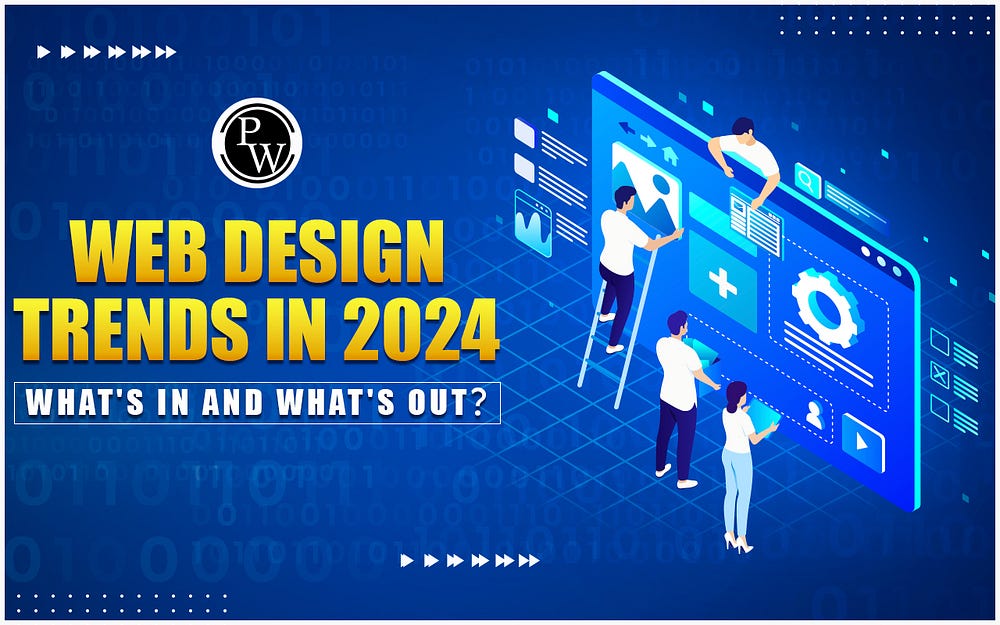In an age where digital presence is paramount, creating a logo that stands out has become more...
Top Web Design Trends Shaping 2024: What You Need to Know
As we move further into 2024, web design trends continue to evolve, influenced by technological advancements and changing user expectations. Keeping up with these trends is crucial for businesses looking to create engaging, modern websites that resonate with their audience. Here’s a look at the top web design trends you need to know to stay ahead of the curve.

1. Minimalism and Simplified User Interfaces (UI)
Simplicity remains a powerful tool in web design. In 2024, minimalism is taking center stage with even cleaner and more refined layouts. A simplified UI not only improves user experience but also allows visitors to focus on what matters most — your content. The trend is moving towards white space, fewer elements on a page, and clear, intuitive navigation.
Key Features:
- Clean layouts with ample white space
- Single-page designs or simplified navigation
- Fewer but more impactful visual elements
2. Dark Mode with Neon Accents
Dark mode remains a favorite, but the trend is evolving with the addition of neon accents and bright highlights. This combination creates an eye-catching contrast that adds a modern, sleek look to websites. Dark mode is not only visually striking but also reduces eye strain, particularly for users browsing in low-light environments.
Key Features:
- Dark backgrounds with bright, neon elements
- Elevated contrast and visibility
- Better for low-light usage and improved battery life on devices
3. 3D Elements and Interactive Visuals
As technology improves, websites are incorporating more interactive 3D elements and animations to create immersive user experiences. Whether it’s for product displays or storytelling, 3D visuals add depth and engagement to web pages. Users can interact with elements by rotating, zooming, or exploring features, which boosts engagement and dwell time.
Key Features:
- 3D models of products or environments
- Interactive animations that respond to user actions
- Increased visual storytelling and brand engagement
4. AI-Powered Personalization
Artificial Intelligence (AI) is now playing a huge role in shaping user experiences on websites. AI-driven tools allow businesses to personalize content, recommendations, and design elements based on user behavior and preferences. Whether it’s for personalized shopping experiences or targeted content, AI helps deliver more relevant and tailored experiences, boosting conversion rates and user satisfaction.
Key Features:
- Dynamic content that changes based on user data
- AI-driven chatbots for better customer interaction
- Predictive product recommendations and personalized suggestions
5. Micro-Interactions
Micro-interactions, such as hover effects, scrolling animations, and small but noticeable animations, continue to grow in popularity in 2024. These small elements bring life to a website and make it feel more dynamic, enhancing the overall user experience. When done right, micro-interactions guide the user and provide feedback in a delightful and engaging way.
Key Features:
- Subtle animations triggered by user actions
- Visual feedback on buttons, icons, and navigation
- Enhanced interactivity with scrolling and cursor movements
6. Immersive Scrolling and Parallax Effects
Scrolling isn’t just for navigating content anymore. In 2024, immersive scrolling experiences, where different elements animate or change as you scroll, are becoming popular. Parallax effects, where background images move at a slower pace than the foreground, create a sense of depth and immersion, enhancing the storytelling aspect of websites.
Key Features:
- Parallax effects for a layered look
- Scroll-triggered animations
- Immersive storytelling through smooth transitions
7. Bold Typography and Custom Fonts
Typography is being used as a design element in itself, with bold, oversized fonts making a statement. Unique, custom fonts are growing in popularity, helping brands differentiate themselves. Typography is also being used as an artistic element, with text being integrated into images or used as dynamic, interactive features.
Key Features:
- Bold, oversized typography as focal points
- Custom fonts for unique branding
- Interactive text elements that change with user interaction
8. Sustainability in Web Design
As businesses become more environmentally conscious, sustainable web design is gaining traction in 2024. This involves creating websites that are energy-efficient and have a minimal environmental impact. Sustainable web design focuses on optimizing site performance to reduce energy consumption, like minimizing page load times, using eco-friendly hosting, and optimizing images.
Key Features:
- Lightweight websites that consume less data and energy
- Use of green hosting solutions
- Optimized images and resources for faster loading times
9. Augmented Reality (AR) Integration
Augmented Reality is making its way into mainstream web design, particularly in e-commerce. AR allows users to visualize products in their own environment through their phone or desktop, enhancing the shopping experience. This technology is becoming more accessible and is a great tool for industries like furniture, fashion, and real estate.
Key Features:
- AR product previews and visualizations
- Enhanced e-commerce experiences
- AR-enabled virtual try-ons for fashion or accessories
10. Voice User Interface (VUI)
With the rise of smart speakers and voice-activated devices, integrating voice commands into websites is a trend that’s gaining momentum in 2024. Voice User Interfaces (VUIs) allow users to navigate websites, search for content, and interact with websites using voice commands, creating a more hands-free and accessible experience.
Key Features:
- Voice-activated search and navigation
- Integration with smart speakers and voice assistants
- Enhanced accessibility for users with disabilities
Conclusion: Stay Ahead of the Web Design Curve in 2024
The web design landscape is evolving rapidly, with new trends emerging every year. To stay competitive, businesses must adapt to these trends and implement them in ways that enhance user experience, engagement, and brand identity. Whether you’re looking to revamp your existing site or create a new one, incorporating these 2024 design trends can help you create a modern, engaging online presence that resonates with your audience.

